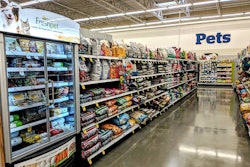
The National Statistics Institute of Mexico (INEGI) recently published its dog food production figures for December 2018. According to the institute, dry dog food volume production fell -6.6 percent in 2018, compared to 2017 levels, while production values fell -5.0 percent in the same year. Comparatively, in the 2013-18 historic period, cumulative average growth rate reached 4 percent in volume terms and 5.3 percent in current value terms.
The last year the industry experienced negative growth was in 2014. At that time, sluggishness was attributable to the new 16 percent value-added tax levied on pet food products; however, dog food volume production dropped just -0.5 percent in that year. The tax did not hinder the industry significantly despite the burden imposed directly on manufacturers.
Two reasons within the pet food industry
Why did Mexican pet food production experience such a sharp decline in 2018?
It is valid to suggest that economic uncertainty arising from the presidential elections in July and the subsequent transition period affected manufacturers expectations for the economy. However, the right answer is within the industry and has a two-fold approach.
First, the market is maturing in several ways. Penetration of overall pet food products in Mexico increased with dynamism during the past 10 years. Furthermore, since dog population growth was moderate within the period, a rapid and consistent increase in pet food penetration means the industry performance was striking.
The second reason that explains the fall in production in 2018 is attributable to Mars’ strategy. This company is no longer the dominating, supreme market leader it used to be. A few years ago, the company started reducing its mix of dry food and launching more added-value products, such as cookies, treats, milk and chew bones for dogs and cats. Stronger competition in the local market forced the giant to diversify its portfolio, thus reducing its production of dry food. Given the size of Mars in the Mexican market, a contraction of its production is quite noticeable and has a direct impact on the industry.
Good news: right time for innovation growth
For the two reasons outlined above, the negative growth experienced last year is not all bad news. More than a technical recession, data suggests that it is the right time for the industry to think bigger – perhaps to understand that further growth is attainable to the extent the industry continues providing newer added-value products.
Premiumization is on the verge to become a sizeable market segment with the correct objectives and market strategies.















